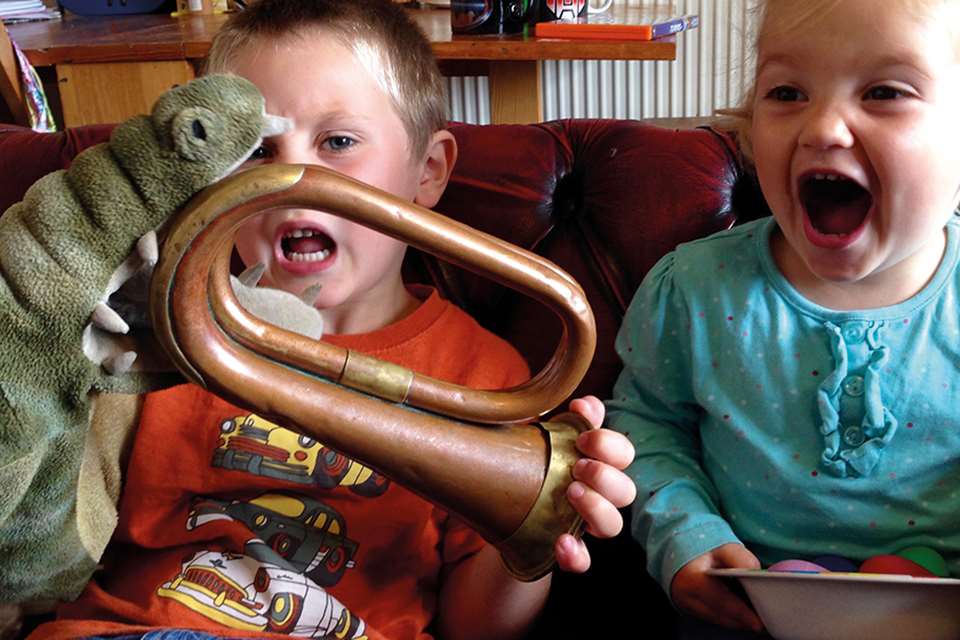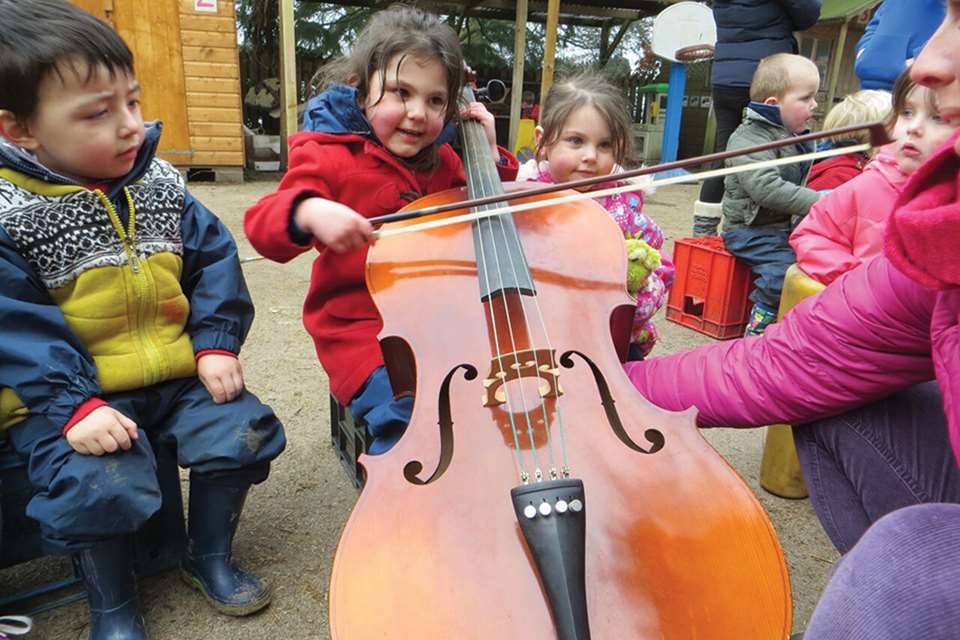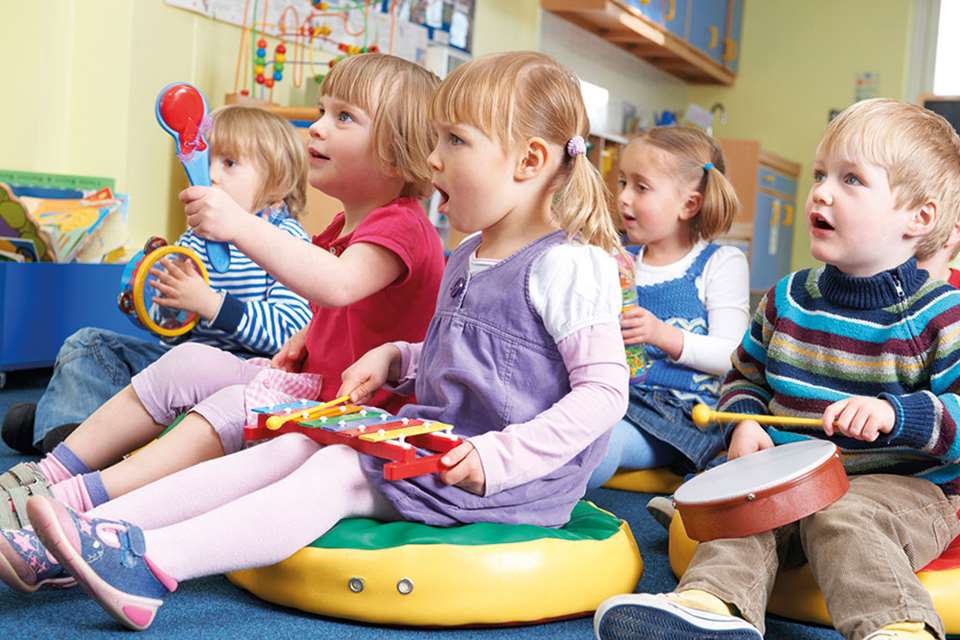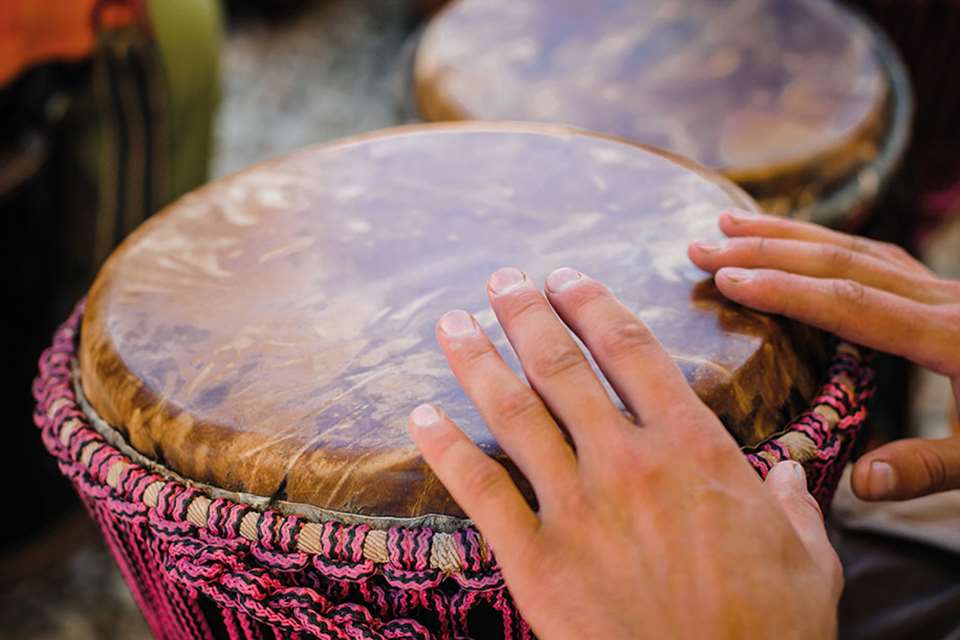Learning & Development: Music: Part 1 - Tuned in
Linda Pound
Monday, September 18, 2017
Music is important in its own right in promoting young children’s cognitive development, well-being and enjoyment, says Linda Pound in the first of a series about how music can support early learning
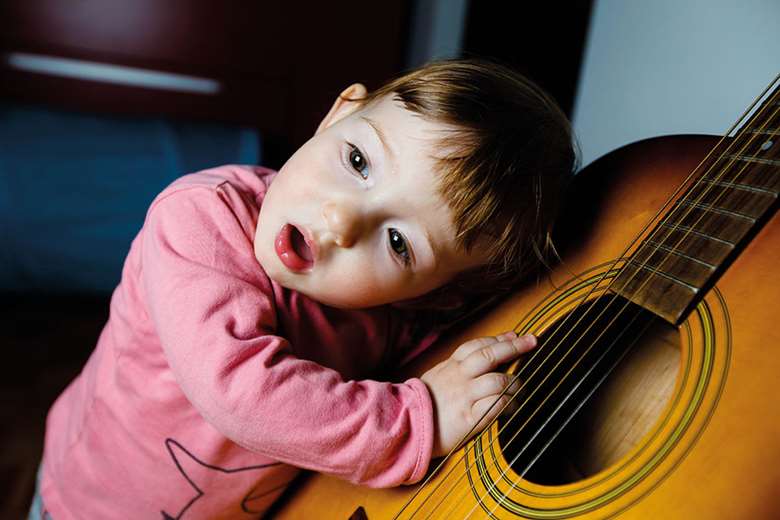
Music permeates every aspect of our lives. More than a decade ago it was found that 40 per cent of our time was lived to the accompaniment of music – you have only to look around you on public transport, in shops and on the street to conclude that this is by now a conservative estimate.
You can hear music on the radio and in television programmes and films, in cars and restaurants, and at the dentist. And as if that were not enough, you can take it with you everywhere you go. Just look to see how many people around you are in their own world of sound, wearing headphones. So, why is music so prevalent in our lives, here and around the world, and what is its function or purpose?
It is now apparent that music, far from being a frivolous time-filler and background to our daily life, has played a pivotal role in human development – that it has, in fact, been a key factor in developing humanity. As a species, we danced before we walked and sang before we talked. Archaeologists and musicologists alike trace a common root shared by verbal language and music.
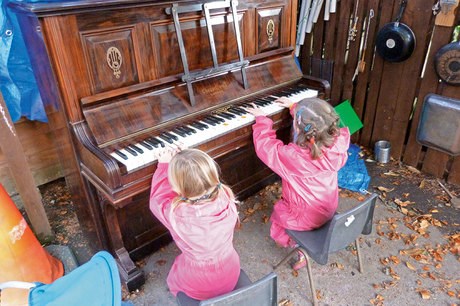
The importance of music in babies’ development is apparent. We sing to babies, raise the pitch of our voices, mirror the sounds they make, and rock them rhythmically to soothe them. And the value of music does not end in infancy.
Colwyn Trevarthen, Emeritus Professor of child psychology and psychobiology at the University of Edinburgh, underlines the role of what he terms communicative musicality in both developing ‘our innate skill for moving, remembering and planning in sympathy with others’ and in nurturing the cognitive fluidity that enables us to learn, to change our minds, to make choices and to correct errors.
Music is of elemental importance in life. It can take us back to another place – real or imagined; it can mirror our mood, or create one – think about lullabies, which are used throughout the world to create a calm, sleepy atmosphere. It can create solemnity in religious ceremonies and in civic events, gaiety in celebrations. It can be persuasive – moments of suspense or anticipation are made more so by the addition of music, and retailers know that it can be helpful in getting us to buy more.
In addition, music supports a sense of group identity – football teams all have their own songs, and school songs, regimental marches and national anthems serve a similar purpose. Traditional work songs were designed to get workers co-operating and working more efficiently. Popular music has particular groups of followers who identify around a particular style of music or particular bands.
Music supports memory. Awareness of musical sound is the earliest perception and the last to leave us when we die. And it’s one of the tools we use to make things memorable. This may be learning times tables by heart, succumbing to persuasive jingles put forward by advertisers, or remembering events and situations associated with a particular song or piece of music.
In his seminal book Songlines, Bruce Chatwin quotes the words of an aboriginal researcher who describes music as ‘a memory bank for finding one’s way about the world’. Songs are used in many cultures, where the language is not normally written, as a tool for thinking. Since young children are not yet literate, music has a particular place in their education.
Among the most powerful of its functions is the role of music in supporting communication in situations where it might otherwise be difficult. This is true in situations where strong emotions are involved. Is there anyone who hasn’t shed a tear or grinned broadly to a particular piece of music? And it also supports communication with babies and young children where language is not yet fully established. (A later article in this series will explore these ideas in detail and suggest ways in which you can use music and dance to support children’s learning and development.)
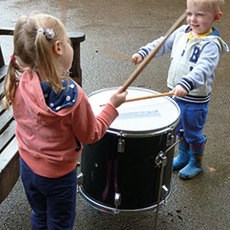
MUSIC IN EARLY CHILDHOOD EDUCATION
The importance of music and dance was recognised by many of the pioneers of early childhood education. Two-hundred years ago, Robert Owen hired musicians to work with children from the age of two. The children were given opportunities to sing, march to music provided by fife and fiddle, and to dance.
Owen believed that dance enhanced children’s sense of well-being. Friedrich Froebel also believed strongly in the creative expression that singing and dance offered. In the early part of the 20th century, Rudolf Steiner and the McMillan sisters valued highly the role that music and dance could play in children’s education.
Today there is much speculation about the place of music in education. Howard Gardner’s Multiple Intelligence Theory includes musical intelligence. He, like other theorists from other disciplines and fields of research, argues that musical intelligence is the earliest to emerge and that it underpins human development and is particularly important in conveying and exploring emotion.
Although some may regard music as a gift given to only a few people, Gardner emphasises that we all have some measure of musical intelligence and that for success it must be mixed with spatial intelligence, bodily-kinaesthetic intelligence and interpersonal intelligence, as well as self-awareness or intrapersonal intelligence.
There have been numerous studies attempting to show that there is a so-called ‘Mozart effect’ – that simply listening to Mozart’s music improves brain power. CDs entitled Baby Bachor Baby Beethoven make numerous claims, but these are not confirmed. However, listening to music – not just Western classical music – has lots of benefits for listening (which stimulates and engages the brain), for memory and for spatial awareness. It is also simply pleasurable. All of these aspects of engaging with music can be linked to the Characteristics of Effective Learning and will be explored throughout this series.
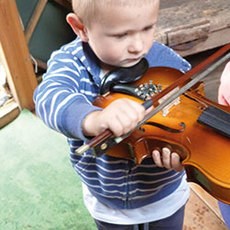
A MUSIC-RICH ENVIRONMENT
In order to make use of the many benefits that music can offer young children, we need to create music-rich environments that build on children’s natural playfulness and promote exploration of musical sound and movement.
Developing a music-rich environment also involves being broadly aware of the way in which children develop musically. There are no hard and fast rules about this and it often depends on experience. However, the following may provide some guidelines:
Babies
Babies can recognise tunes and voices they have heard, even before birth. They mimic sounds and move to music as soon as their physical development allows. Their babbling includes many of the features of singing. As young as two months old, they may mimic undulating patterns of sound, matching pitch, loudness and the overall shape of songs and utterances made by their mother. By four months, many children can match the rhythmic structure of the sounds that they hear.
Traditional short songs such as ‘Round and round the garden’ and ‘This little piggy’ are great because they have a structure and a climax, but it is also good to make up songs about what you are doing. It is very easy to make up songs about eating and feeding to tunes such as ‘Here we go round the mulberry bush’.
Toddlers and twos
This age group enjoys dance and frequent repetition of favourite songs. They will love it when you playfully change words in songs or insert their names. You will hear them voicing bits of familiar songs. Lukas’s favourite, for example, was ‘Miss Polly had a dolly’, which he referred to as ‘sick, sick, sick’, accompanying the words with rocking movements. Children at this age are drawn to live music – intent on watching how the sounds are made and moving rhythmically – listening with their bodies.
Twos to fives
Twos, threes, fours and fives love to sing. They still enjoy repetition and will join in with actions even if they are not confident about words or tune. At this age, they will frequently make up songs. Action rhymes also involve many of the features of songs and are enjoyed by children of this age. Their singing has been compared to scribbles – it may include the beginning and end pretty accurately but be less accurate elsewhere.
As with all developmental processes, the more they do the better they will get. Their made-up songs are likely to be more adventurous than their improvised instrumental playing. Physical engagement continues and can be developed by providing a mirror so the children can monitor their movements.
Resources
The resources needed for a music-rich environment include a wide variety of musical instruments and other sound-makers such as home-made shakers and rustling paper; a variety of recorded music and a means to play it; songbooks and favourite song cards, including some with scores to introduce children to the idea of written music; writing materials to encourage children to record their own ideas; and images and objects that might stimulate children’s imaginative use of sound – this might include pictures of dancers or waterfalls, trains or puddles; you could add a large seashell or a carved figure, for example, and see what that suggests to children.
Outdoors, a music-rich environment may include fixed structures with built-in xylophones, tubes or drums. The outdoor area can also allow you to make use of large noisy instruments that would be unsustainable indoors. But opportunities to explore sound don’t need to be expensive. A collection of plastic tubing, cardboard tubes, cans and buckets, sticks and table tennis bats can offer tremendous opportunities for fun and experimenting with sound.
The aim should be to alert children to the world of sound – blowing bubbles with tubing in the water tray, bouncing different kinds of balls, or just listening to the sounds in the environment, which may be traffic or birds, sheep or trains, voices or machines.
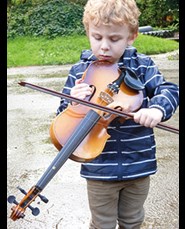
MUSIC: ITS IMPORTANCE
- Music has a vital role to play in young children’s education:
- Music and dance are inseparable in the education of young children. (This will be discussed in more detail in the next article on physical development.)
- Music offers fun and playfulness – so is key to joyfulness, engaged learning and promoting the Characteristics of Effective Learning.
- Music supports creativity and fluidity in thinking – also key to effective learning.
- Music offers opportunities for symbolic representation of feelings, ideas and experiences – which is crucial to literacy as well as mathematical development.
- Song and language are closely connected – developmental psychologists tell us that the voice is the baby’s first toy and as such supports the instinct both to sing and to speak. Human evolution towards spoken language included a range of non-verbal and prelinguistic musical sounds.
- Adults (and even young children) use many aspects of music to communicate with babies – capturing the baby’s attention, communicating feelings and developing shared meanings. (This will also be explored in detail later in this series.)
PRACTITIONERS: BUILD YOUR CONFIDENCE
We are all born musicians – we don’t have to be able to read music, play an instrument or even sing in tune in order to support children’s musical development. Many world-famous musicians are unable to do all of these things, yet no one would doubt the musicianship of, for example, Paul McCartney. You don’t have to be Picasso in order to support children’s art work – and neither do you need to be Gareth Malone to support their (and your own) singing.
To become more confident in your own musical abilities:
- Just sing! The more you sing, the better you’ll get. Sing with the children and sing with friends. There are lots of friendly, informal singing groups, so why not join one – it will be good for your health and well-being.
- When children are playing with instruments and other sound-makers, join in and copy their rhythms – this will make the children more aware of the sounds that they are making and give you confidence.
- Take some small steps in music-making – such as using an instrument to illustrate part of a story. This could be using a shaker to represent the troll in ‘The Three Billy Goats Gruff’ or running a beater up or down a xylophone to represent climbing or falling in ‘Jack and the Beanstalk’.
- Use what you know about playful learning and language development and apply it to music and dance. Have fun!
- Keep reading this music series in Nursery World, as each one will include ideas for helping to make you feel more knowledgeable and confident about making, and supporting, music.
ABOUT THIS SERIES
This eight-part series will explore how music:
- aids early learning and development
- can support learning across all areas of the EYFS
- promotes the Characteristics of Effective Learning.
The series will also identify ways in which adults who lack confidence in their own musical ability or competence can become more confident.
MORE INFORMATION
- Communicative Musicality: Exploring the basis of human companionship (2009) Malloch S and Trevarthen C (Eds). Oxford University Press
- Songlines (1987) Chatwin B. Picador/Pan Books
- www.singup.org – resources and ideas to make singing part of every child’s learning
- Supporting Musical Development in the Early Years (2003) Pound L and Harrison C. Open University Press
- Music with the Under-Fours (2003) Young S. Routledge
- Music 3-5(2009) Young S. Routledge/ Nursery World
- The Singing Neanderthals: The Origins of Music, Language, Mind and Body (2005) Mithen S. Weidenfeld and Nicolson
- Part two of this series, looking at music and physical development, will be published in the 16-29 October 2017 issue of Nursery World.


